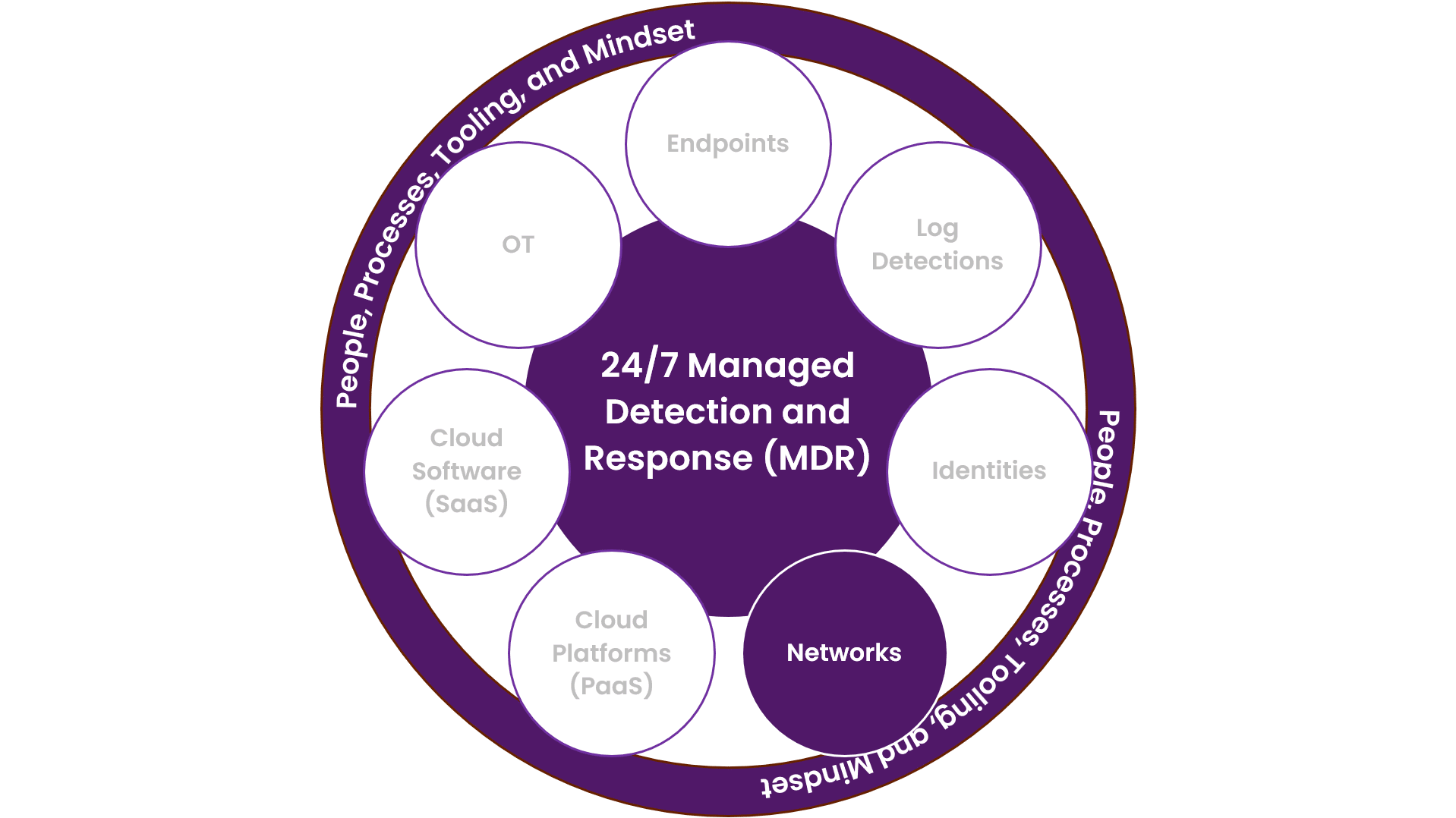Network Detection and Response (NDR)

What is Network Detection and Response (NDR)?
Network detection and response (NDR) is a cybersecurity solution that monitors, detects, and responds to incidents on a network level. Instead of installing an agent like with the EDR, the NDR analyzes the communication between endpoints and can respond to threats detected on a network layer.
Here’s how it works:
- Monitoring: NDR solutions record the activities and events taking place on the network and in the communication between the endpoints, providing security teams with the visibility they need to uncover incidents.
- Detection: NDR uses various data analytics techniques to detect suspicious system behavior. It can recognize threats and determine what kind of threat it is.
- Response: Once a threat is detected, EDR provides remediation suggestions to handle the affected systems.
- Threat Hunting: NDR allows for proactive defense. Threat hunters work to hunt, investigate, and advise on threat activity in the environment.
In essence, NDR is like a security guard who constantly watches over your network, ready to detect and respond to any potential threats. It’s a crucial part of modern cybersecurity strategies, helping to protect your organization’s information and systems from cyber threats.

Network Detection and Response
Monitoring
The NDR agent constantly monitors the communication between the network’s endpoints and reports when patterns or endpoint behavior appear to be malicious. It manages this by analyzing the data packets that flow on the network. NDR usually has the capability to store packet information for retrieval later.
Detection
The NDR can be compared to older intrusion detection or prevention systems, but it has far more capabilities to detect security threats using pattern recognition, machine learning, and AI.
Response
NDR usually requires a connection to a SOAR platform to respond to detected security threats. Most NDR solutions can only listen and monitor network traffic without a built-in capability to respond.
Threat hunting
Threat hunting is an iterative process to proactively search for and identify weaknesses in the system or endpoint behavior. The approach combines digital forensics with incident response tactics to identify possible entry points for an attacker or uncover previously unknown cyber threats inside the organization. Threat hunters assume that the threat actor is already inside, and they focus on finding unusual behavior prior to malicious activities. The primary goal for a threat hunter is to identify a possible attack vector and mitigate it before the attacker discovers it.
FAQ
What is NDR in cybersecurity?
NDR stands for network detection and response. It’s a cybersecurity technology that continuously monitors and responds to threats on the network between connected endpoints.
Why is NDR important?
NDR is important because it provides visibility into network traffic, helping to detect and respond to threats quickly and effectively.
How does NDR differ from intrusion prevention systems (IPS)?
Unlike IPS, which relies on known and predefined rules, NDR analyzes network behavior to detect unusual patterns and potential threats.
What features should good NDR have?
Good NDR solutions should include features like real-time monitoring, threat detection, incident response capabilities, and integration with threat intelligence feeds.
What challenges does NDR implementation pose?
NDR implementation can be challenging due to factors like network complexity, the need for skilled personnel, and potential privacy concerns.